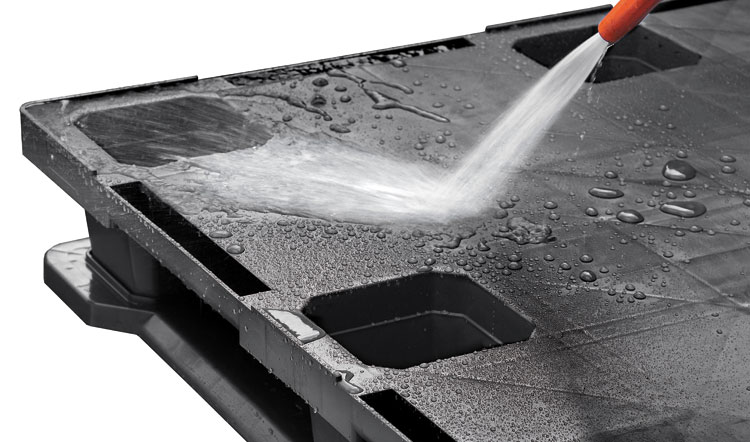|
Has searching for an FDA approved plastic pallet left you with confusion and sticker shock? Save money (and avoid buying the wrong pallet) with these tips for understanding what the FDA really wants in your pallet application. You work with packaged food or pharmaceuticals and you've been told you need to purchase an inventory of FDA approved plastic pallets. You're not even sure you know what that means. Worse, the thought of complying with government regulations sounds complicated. Don't worry. Finding the right pallet is often easier than it first appears.
The FDA Code of Federal Regulations can seem confusing but it boils down to this: the FDA is concerned with the design, workmanship and material used in equipment meant to handle food and drugs (Title 21 CFR part 100.40). What does this mean for incidental product contact?
Bottom line from the FDA on plastic pallets When asked specifically about pallets, the FDA has answered repeatedly that for incidental product contact, a pallet must simply not pose an intrinsic hazard. Easy, right? It doesn't even have to be blue. For most applications, the less expensive standard black Plastic Pallet will be approved for use in FDA regulated applications. So now you know the basics for using plastic pallets in FDA regulated facilities. When there is general, incidental product contact, a standard plastic pallet may be all you need. If your product contact is not incidental, please watch for my next post: FDA Pallets for FULL PRODUCT CONTACT. Still not sure about which plastic pallet will work best for your FDA requirements? Get in touch with me or post your questions below. I am glad to help. Post by: Hartson Poland, Business Development - Plastic
2 Comments
Suha Arabeiat
5/2/2021 08:51:08 am
What is the best plastic pallet for storing frozen food: the perforated pallet or the solid one?
Reply
5/4/2021 10:07:02 am
Greetings, Suha
Reply
Leave a Reply. |
Call Us: (410) 477-3000
Headquartered in Baltimore since 1918 Nelson Company is a trusted source for pallets & packaging materials.
NelsonCompany.com Is your packaging system costing more than it should? Find out how you can start saving with an analysis from Nelson Technical Center.
Our own web-based software for reverse distribution. Nelson-ART™ manages the entire life-cycle of your packaging assets.
|
Tech CenterThe Nelson Technical Center finds savings. Solutions for the design, supply and recovery of transport packaging.
(443) 649-1049 |
Wood SalesCustom wooden pallets and crates are our specialty. Ask us about wood manufacturing, repair and recycling.
(410) 477-3000 |
|





 RSS Feed
RSS Feed
